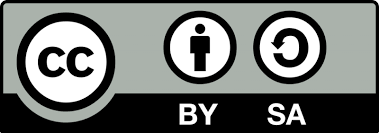Evaluation of centers and improvement plans in the Autonomous Community of Aragon
DOI:
https://doi.org/10.23824/ase.v0i39.795Downloads
Abstract
The evaluation model of Aragon's Education Inspection centers, which has been carried out since the 2014/2015 academic year, is presented. The application of the model is based on four basic principles: respect for autonomy, participation of the educational community, adaptation to the context, and pursuit of improvement. These principles are specified in several questionnaires that collect five areas of analysis of the reality of the centers (relational, resources, organizational-functional, teaching-learning planning, and teaching-learning development). Each of these areas integrates different dimensions that include specific aspects demanded by the different sectors of the educational community (teachers, inspectors, students, families). The conclusions are presented, and the difficulties of the model and the future that this action can have are indicated, aimed at generalizing the self-evaluation process by the centers through the model offered by this Educational Administration, improving the Inspection's intervention in this process, and ensuring that any evaluation action that arises in an educational center is integrated into the same model and not as an isolated element without contextualization.
References
Bonnet, G. (2004). “Evaluation of education in the European Union: Policy and methodology”, Assessment in Education, Vol. 11, No. 2.
Campbell, C. and B. Levin (2008). “Using data to support educational improvement”, Educational Assessment, Evaluation and Accountability, No. 21, pp. 47-65.
Casanova; Mª A. (2004). Evaluación y calidad de centros educativos. Madrid, La Muralla S.A.
Dedering, K. and S. Müller (2010). “School improvement through inspections?” First empirical insights from Germany, Journal of Educational Change, Vol. 12, Issue 3, Springer, pp. 301-322.
Ehren, M.C.M. and A.J. Visscher (2008) “The relationship between school inspections, school characteristics and school improvement”, British Journal of Educational Studies, Vol. 56, No. 2, June 2008, Blackwell Publishing Ltd, Oxford, pp. 205–227.
Faubert, V. (2009). “School evaluation: Current practices in OECD countries and a literature review”, OECD Education Working Papers, No. 42, OECD Publishing, Paris, www.oecd.org/edu/workingpapers.
Gray A. (2014). Supporting school improvement: the role of inspectorates across Europe. Standing International Conference of Inspectorates. Brussel.
Looney, J. (2009). “Assessment and innovation in education”, OECD Education Working Papers, No. 24, OECD Publishing, Paris, www.oecd.org/edu/workingpapers.
Marshall, K. (2005) “It’s time to rethink teacher supervision and evaluation”, Phi Delta Kappan, Vol. 86, No. 10, pp 727-735.
Ministerio de Educación y Ciencia (1969). La educación en España. Bases para una política educativa. Madrid: MEC.
Ministerio de Educación y Ciencia (1989). Libro Blanco para la Reforma del Sistema Educativo. Madrid, España: Secretaría General Técnica, Centro de Publicaciones. https://sede.educacion.gob.es/publiventa/d/913/19/0
Ministerio de Educación (1994). Centros educativos y calidad de la enseñanza.
OECD (2013). OECD Reviews of Evaluation and Assessment in Education: Synergies for Better Learning, An International Perspective on Evaluation and Assessment, OECD Publishing, Paris. http://dx.doi.org/10.1787/9789264190658-en.
Tiana-Ferrer, A. (2018). Treinta años de evaluación de centros educativos en España. Educación XX1, 21(2), 17-36, doi: 10.5944/educXX1.21419
How to Cite
Issue
Section
Published
Keywords:
License
Copyright (c) 2023 GEMA NIEVES SIMÓN, José Luis Castán Esteban, Luis Mallada Bolea, Ignacio Polo Martínez, Óscar Sánchez Estella, Melanie Scott Taylor

This work is licensed under a Creative Commons Attribution-ShareAlike 4.0 International License.

Attribution Share-Alike CC BY-SA
Those authors who have publications with this magazine, accept the following terms:
A) The authors will retain their copyrights, which will be simultaneously subject to the Creative Commons Attribution License that allows others to re-mix, modify and develop on your work even for commercial purposes, provided they credit you And to license their new works under the same terms.
B) The authors will retain the rights of exploitation of the intellectual property of this work, and especially the rights of reproduction, distribution, transformation in any of its modalities and public communication of said work, which will be simultaneously subject to the License Of recognition of Creative Commons that allows others to re-mix, modify and develop on your work even for commercial purposes, provided they credit you and license your new works under the same terms.
Creative Commons Attribution-ShareAlike 4.0 International Public License

